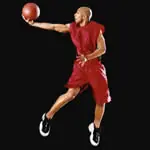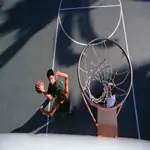On November 13, 1967, the Indiana Pacers of the American Basketball Association were losing to the Dallas Chaparrals, 118-116, with just one second left on the clock.
Indiana inbounded the ball to Jerry Harkness, who was 92 feet away from the basket. With no time to do anything else, Harkness threw a towering Hail Mary heave toward the goal. It smacked off the backboard and went in.
Basketball Events Near You
2025 Cam Wilder (RWE) @ Champion Mill Boys Divisions
Spooky Nook Sports Ohio • Hamilton, OH
Basketball
Class of 2027
Coach Woottens Basketball Camp • Hamilton, OH
Basketball
Class of 2026
Coach Woottens Basketball Camp • Hamilton, OH
Basketball
Pandemonium erupted in Dallas, but for all the wrong reasons. You see, 1967 was the first year of the 3-point shot among basketball's top leagues, and the players and fans weren't used to it. A lot of the 2,500 in attendance that day thought that the Harkness miracle tied the game and forced overtime. In fact, he was 68 feet behind the brand new 3-point line. His shot won the game for the Pacers, 119-118.
"We were running off the floor to huddle up for the overtime when the official, Joe Belmont, came up to me and said 'Jerry, it's over. That was a 3-pointer,'" Harkness said in the book Loose Balls. "I said, 'I forgot all about that. A 3-pointer.' Then we were celebrating again, because we found out that we won the game."
These days, the 3-pointer is second-nature to basketball players and fans. It's a safe bet that nobody under the age of 30 has any recollection of college or professional basketball being played without a 3-point line.
But, in fact, basketball was played for a long time without the 3-point shot. The NBA considered it gimmicky for years. The NCAA was even slower to adopt the rule.
Once it became mainstream, though--with the ABA leading the charge in 1967--basketball would never be the same again.
The Inception
The 3-point line's first use in a professional league was back in 1961 in the American Basketball League. The ABL only lasted 1 ½ seasons before folding, so the 3-pointer quickly went away.
The NBA, which had been around since 1946, never seriously considered it at that point. But when a new league competing against the NBA was dreamed up in the mid-1960s, the 3-point shot was back in the spotlight.
The ABA, which started in 1967, differed from the NBA in its experimentation of fan-friendly ideas. They had a red, white and blue basketball, a slam dunk contest, and of course, the 3-point shot.
According to the book Loose Balls: The Short, Wild Life of the American Basketball Association, which chronicled the nine-season history of the ABA, league organizers had planned to use the 3-pointer from the beginning. Coincidentally, the commissioner of the ABA and a big proponent of the 3-pointer was George Mikan, a 6-foot-10 NBA legend who probably would've never shot one during his playing days.
"We called it the home run, because the 3-pointer was exactly that," Mikan said in the book. "It brought fans out of their seats."
In 1976, the ABA and NBA merged, with four teams joining the NBA--the Indiana Pacers, San Antonio Spurs, Denver Nuggets and New Jersey Nets. The 3-point shot, at first, wasn't part of the package.
The NBA stayed firm in the game's traditions. The league didn't adopt the 3-pointer until 1979--Magic Johnson and Larry Bird's rookie season. While certain college basketball conferences experimented with it in the early '80s, the NCAA didn't universally implement a 3-point line until 1986, with high school basketball following suit a year later.
The Adjustment
In the late 1960s, when the ABA introduced the 3-pointer, a generation of coaches had to rethink everything they knew about the game, and it made things hectic. One ABA coach admits that at first, he never used the 3-pointer unless his team was losing late in the game and was desperate for points.
Other coaches had similar problems adjusting to its reality.
"You have to tell your players to remember who the shooters are, and when those guys are 25 feet from the basket, get in their jocks and guard them," former ABA and NBA coach Hubie Brown said in Loose Balls. "Don't give them the 25-footer, which is something players had been conditioned to do all their lives. And as a coach, if you have a shooter with range, you have to give him the freedom to take the 25-footer, which is a philosophy that goes against what you learned as a young coach--namely, pound the ball inside."
It wasn't just the coaches, either. The fans loved it right away, but there were growing pains among the players.
"It took a while for players to understand time and score situations, when to take it," said Len Elmore, the CEO of iHoops who played in both the ABA and NBA. "You also recognize that players who hadn't been accustomed to playing with a 3-point line really had to work to develop the range."
Michael Jordan is a perfect example of that. He played college basketball at North Carolina without a 3-point line. In his rookie season with the Chicago Bulls, he was 9-for-52 from 3-point range. He never shot better than 20 percent from long range until his fifth season in the NBA. But by the time his remarkable tenure with the Bulls wrapped up, he was consistently shooting better than 35 percent from 3-point range.
The Evolution
It may not be obvious, but the 3-point line continues to change the sport today.
"Guys have become super efficient at the shot," Elmore said. "You see the NCAA continue to move the line further back because players can shoot it. At one time, it was only 19 feet at its shortest point."
In addition to the players continuing to improve, the utilization of the shot continues to evolve as well.
"Now you're seeing it on the fast break, whereas coaches from old school wouldn't want you to take that shot on the break. They'd want you to challenge the defense and get the highest percentage shot," Elmore said. "Also, you're seeing guys now driving to the basket, and even though they have an opportunity to take the layup or a much shorter shot, they're more willing to kick it out to the wide-open 3-point shooter. I'm not sure the percentages work from that standpoint, but it's a trend."
Though the distances differ between all levels of basketball, the 3-point line is universal. The NBA has a 22-foot 3-point line in the corners and a 23-foot, 9-inch line elsewhere. The WNBA and the international game plays with a 20-foot, 6-inch line. The NCAA men's game has a 20-foot, 9-inch line while the NCAA women and high schools have a 19-foot, 9-inch line.
Whereas size was a crucial factor in matchups in the past, the 3-point line gave smaller teams a great equalizer.
Even the post players get into the action--just not very often.
Shaquille O'Neal is 1-for-22 from 3-point range in his career, that one a humorous bank shot buzzer-beater. Kareem Abdul-Jabbar played half his pro career with no 3-point line and half of his career with it. He was 1-for-18 from behind the arc in his career.
More than anything, though, the 3-point line has made basketball a completely different experience for the fans--a more spread-out game with another level of energy that wasn't there before the 1960s.
"It keeps the game exciting, particularly at the college level," Elmore said. "There are times when people fall in love with it, and there's the adage that you live by it and you also die by it. When it's not incorporated properly and not utilized properly, it can hurt a team. But the advantage is to be able to stretch the floor."







Discuss This Article